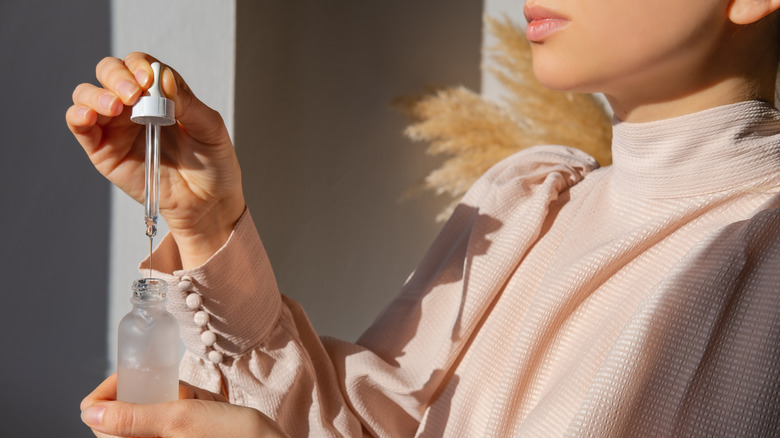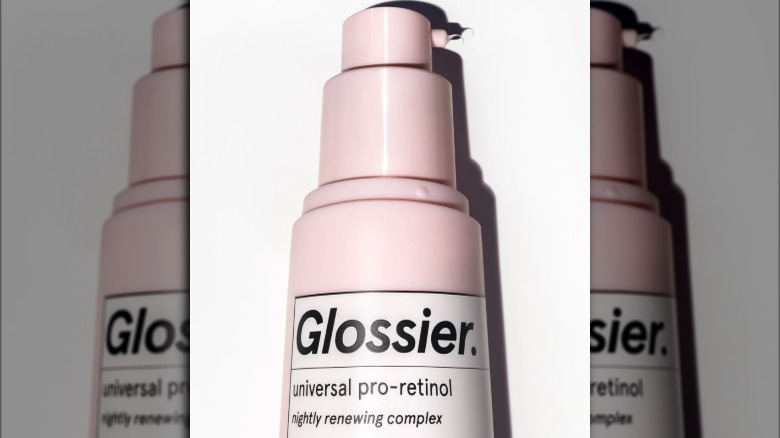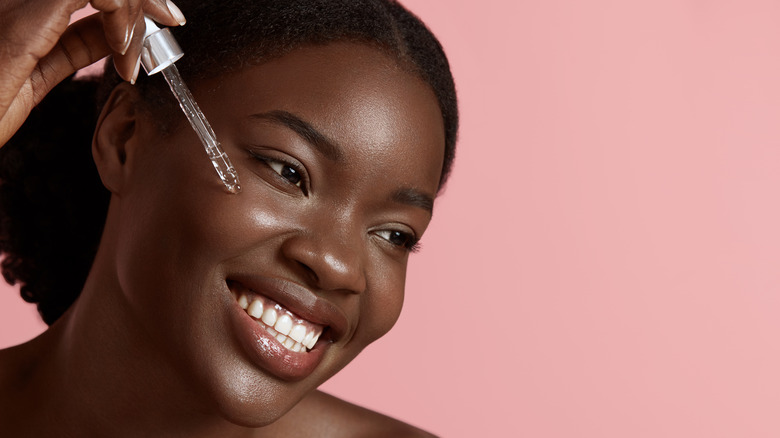Should You Be Adding Glossier's Retinol Into Your Skincare Routine?
Unless you've been living under a rock, the chances are that you've heard of retinol — a.k.a. the skincare ingredient of the moment. It's a solution that every dermatologist seems to swear by and one that has made its way into a lot of the top tier skincare products on the market, and yet there's still a lot of confusion around it. From which strength to choose and how to apply it to skin safely and effectively, to how retinol can aid skin health, there seems to be a culture of misinformation around skincare hero retinol. And now, Glossier Universal Pro-Retinol, the first-ever Glossier retinol, has arrived, and it's taking the skincare sector by storm, but should you be using it?
As per Healthline, retinol is often "touted" as a miracle skincare product, and when used properly, has the ability to completely transform your skincare. Retinol is a form of vitamin A that is safe for use on the skin — it is part of a group of derivatives from vitamin A, known as retinoids. Different retinol products have different strengths. While some retinol-based products are prescription only, others — like Glossier's new retinol — can be purchased without a prescription.
When it comes to using retinol, it's important to be aware that this topical treatment has a number of uses, and can help to combat a number of conditions. So, how do you know if your skin could benefit from Glossier's universal retinol and what's so special about it?
What sets Glossier's universal retinol apart from its competitors?
As per Glamour, Glossier decided to make a retinol product that would work well for everyone, regardless of age, skin type, or current experience using retinol. In a post on their Instagram account, Glossier explained that, "Pro-retinols are a type of retinoid (along with retinol, retinal, retinyl esters, etc). While retinoids take many shapes, the basic science of how they work remains largely the same across the board."
The company explained in the post that retinoids first entered the market around 70 years ago and were mainly used to achieve a clearer complexion. However, over time as people relying on retinol began to age, researchers realized that a retinol-based formula could address a much more diverse range of skincare issues, including fine lines, blemishes such as acne, and uneven skin tone and texture.
What's unique about the new Glossier universal retinol is the fact that it's designed and formulated to be usable for all ages, skin types, and skin concerns rather than simply targeting one specific skin type or skin issue.
Should you be using Glossier's retinol?
As per Glamour, the formula used by Glossier uses 0.5% retinyl sunflowerate, which is a combination of pure retinol and sunflower seed-based fatty acids. What this results in is a product that offers all of the benefits of a retinol, such as hiding fine lines, fading dark patches, reducing skin blemishes, and improving skin tone and texture, but in a gentler formula designed to be less likely to cause skin irritation. The Glossier formula is also made using stevia extract which boosts the skin smoothing properties of the formula, in addition to having plant-based humectants such as glycerine and mondo grass root, which help to keep skin hydrated.
The universal vegan formula can be used to help manage a number of skin concerns, including managing acne, reducing skin pigmentation, reducing the signs of aging, and improving the signs of sun damage, in addition to simply perfecting skin tone and texture, making it suitable for just about anyone. According to the Glossier website, the new Glossier retinol should only be used in the evening, as the formula may increase your skin's sun sensitivity, leading to sun damage. To apply the formula to your skin, use a pea-sized pump of product and apply to skin that has been cleansed, and follow with moisturizer.
Start out using the formula once or twice a week, and then slowly build up to applying it every night — it's important to give your skin time to adapt.


